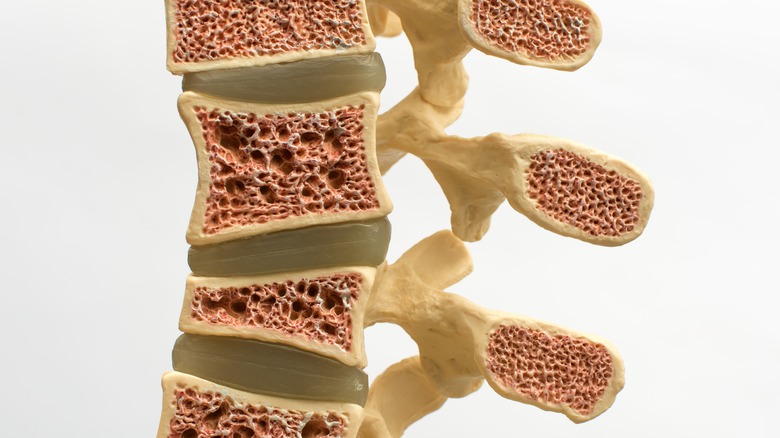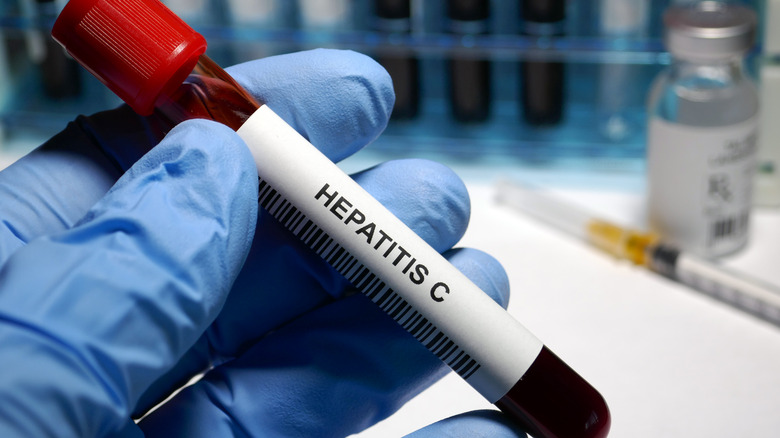These 'Silent' Medical Conditions Are More Dangerous Than You Think
Silent medical conditions, often hidden beneath the surface of apparent well-being, are a challenge to both patients and healthcare professionals. These sneaky ailments, characterized by subtle or absent symptoms, can easily dodge diagnosis until they manifest in advanced stages, meaning that they often go untreated while quietly wreaking havoc in your body. A number of factors contribute to the underrecognition and undertreatment of silent conditions. According to a study published in The Journal of General Internal Medicine, some patients may downplay their symptoms, thinking it's just a passing inconvenience. In contrast, others get discouraged by the burden of elevated healthcare costs.
From a medical perspective, countless challenges may lead doctors to overlook these conditions, ranging from dismissing symptoms due to unconscious biases and rooted stereotypes to a lack of experience in recognizing their subtleties, leading them to brush off symptoms that actually mean something (via Psychology Today). Yet, the consequences of such oversights can lead to bigger problems, such as delayed intervention and compromised health outcomes (thus the importance of getting regular checkups). This article takes a look at some common silent medical conditions you should be aware of to avoid unpleasant surprises.
Coronary artery disease
Coronary artery disease (CAD) might sound like a mouthful, but it boils down to trouble in the blood vessels that carry blood to your heart (your arteries). In short, what happens in CAD is that plaque (a combo of cholesterol deposits) builds up on the artery walls, and as time goes by, this buildup makes the arteries narrow, like a clogged-up drain. This process, called atherosclerosis, can even block the blood flow to your heart, leading to a full-on heart attack, per the Centers for Disease Control and Prevention (CDC).
CAD is the most common heart issue in the U.S. Yet, for many, it still goes unnoticed until it is too late because it often keeps things on the down-low. The most common sign of CAD is angina, which is chest pain or discomfort. It happens when the blood flow to your heart muscle is decreased, leaving you with an achy chest. Aside from chest pain, shortness of breath, palpitations, and even feeling tired can also be red flags (via the American Heart Association), though they are easy to dismiss or confuse for something else. The good news is that CAD can be prevented by leading a healthy lifestyle, with an emphasis on eating healthy foods, maintaining a healthy weight, and engaging in regular physical activity. By embracing these lifestyle modifications, you can actively preserve your heart's health and reduce the risks associated with CAD.
Silent heart attack
Silent heart attacks belong to this list because they don't hit you with the classic heart attack symptoms that you might expect — just a subtle, tricky bunch of signs that often fly under the radar. According to Harvard Health, these elusive heart events make up a whopping 45% of all heart attacks and have a soft spot for men, impacting them more than women.
People who have these attacks might just feel a bit tired and attribute it to poor sleep, working too much, or just a generalized ache. And when these heart attacks present symptoms, such as mild pain in the throat or chest, they tend to get shrugged off as indigestion or heartburn. Moreover, as Dr. Jorge Plutzky, director of the vascular disease prevention program at Harvard-affiliated Brigham and Women's Hospital, told Harvard Health, the risky part about them is that some folks can go through it feeling perfectly normal, both during the event and afterward, making it a silent threat that's easily missed.
Additionally, just because silent heart attacks are subtle doesn't mean they're any less dangerous. If someone experiences a silent heart attack and doesn't get treatment, their chance of passing away from CAD triples. But it's not all doom and gloom. There's hope in treatment strategies that involve lifestyle changes like a heart-healthy diet, exercise, and taking medications, which may help prevent a second heart attack. So, while silent heart attacks may be silent troublemakers, catching them early and taking action can be the key to staying one step ahead.
High blood pressure
Despite not bearing the word "silent" in its name, high blood pressure or hypertension is generally known as the "silent killer" within the medical community due to its lack of symptoms, which makes it hard to detect until it's already too late, per the U.S. Food and Drug Administration (FDA). As its name suggests, high blood pressure is a condition in which the blood flowing through your veins exerts greater force than it should, quietly damaging your heart and setting the stage for serious health issues. Picture your blood vessels as a network of tunnels, and your blood pressure as the force pushing against their walls. If this pressure stays high for too long, it can silently increase your risk for heart disease and stroke (via the CDC).
Sometimes, a few lucky folks with high blood pressure might experience symptoms like headaches, shortness of breath, or nosebleeds. But there's a catch: besides these symptoms being easily mistaken for something far less severe, these signs often don't show up until hypertension has reached life-threatening levels. Plus, the tricky part for many adults is that there's usually no clear cause for high blood pressure, making it even more important to keep tabs on your blood pressure regularly (via the Mayo Clinic). The good news is that lifestyle changes are often the first line of defense, involving tweaks like reducing salt, shedding excess weight, kicking the smoking habit, cutting back on alcohol, and getting into an exercise groove (per the FDA).
Diabetes
Diabetes is a chronic condition that appears when the pancreas doesn't make enough insulin or your body has trouble using the insulin it manages to make. Insulin is a key hormone for the regulation of blood sugar, ensuring sugar levels are kept in check. Thus, when its availability is disrupted, it leads to elevated blood sugar levels that, over time, inflict serious damage on various body systems, according to the World Health Organization (WHO). The diabetes family is diverse, featuring types like the well-known type 1 and type 2, latent autoimmune diabetes in adults (LADA), and gestational diabetes. Each has its own unique characteristics, but the common thread lies in the disruption of insulin's vital role (via Healthline).
And as it happens, spotting diabetes isn't always a straightforward task, as its symptoms can be deceptively mild. In fact, per the CDC, about 1 in 5 of the approximately 38 million people with diabetes in the U.S. are unaware of their condition. Excessive hunger and thirst, unexplained weight loss, frequent urination, vision problems, fatigue, and slow-healing sores are all potential red flags (per Healthline). While treatment options vary depending on the type of diabetes, they rely significantly on lifestyle choices, such as following a balanced diet, exercising regularly, and keeping a healthy weight. For type 2 diabetes, in particular, lifestyle changes stand as the primary defense that may help prevent or delay its onset (via WHO).
Ovarian cancer
Ovarian cancer, a type of cancer that forms in the cells of the ovaries (the female reproductive organs), is a complex disease with over 30 distinct types (via Northwestern Medicine). Per the site, one of the challenges with ovarian cancer is that it doesn't show noticeable signs in its early stages, and when symptoms do arise, they are often non-specific or vague, making early detection tricky. Thus, it has also gained the reputation of being a silent killer.
The symptoms, if they manifest, include changes in vaginal bleeding or discharge, pain or pressure in the pelvic area, abdominal or back pain, bloating, feeling full too quickly or after eating a small meal, and alterations in bathroom habits (per the CDC). Unfortunately, these signs are not exclusive to ovarian cancer, adding to the challenge of early diagnosis. In addition, there's the issue of the absence of a reliable screening test for ovarian cancer. Unlike other cancers, there's no routine test to catch it early. This means that ovarian cancer is frequently detected at an advanced stage, reducing the chances of successful treatment and survival (via Medical News Today). However, if caught early, medical treatment has the potential to cure it for the majority of individuals. Therefore, regular health checkups and paying attention to any unusual symptoms can make a significant difference in the outcome.
Osteoporosis
Osteoporosis is a bone disease that happens when your bones become less dense and lose bone mass, meaning that they become more fragile, which, in turn, significantly increases the risk of fractures (via the National Insitute of Arthritis and Musculoskeletal and Skin Diseases). The stealthy nature of osteoporosis earns it the title of a silent disease because it typically advances without symptoms, leaving people unaware until it is too late (basically, when a bone breaks).
According to the Cleveland Clinic, the onset of osteoporosis is linked to aging, as bones gradually lose their ability to regenerate and reshape. Although symptoms may not be evident, a few subtle changes might signal the loss of bone strength or density. For instance, losing height by an inch or more, a sudden tendency to stoop or bend forward, difficulty breathing, and lower back pain are red flags for this disease. However, these changes may be too subtle to notice without external observation, which explains why many people miss them. While osteoporosis can't be prevented, healthcare providers typically recommend a combination of treatments to slow down bone loss and fortify existing bone tissue. Exercise, along with vitamin and mineral supplements and medications, are commonly prescribed to bolster bone health.
Fatty liver disease
Fatty liver disease happens when too much fat accumulates in the liver. This excess fat can lead to inflammation and damage the tissue, causing scarring. In severe cases, this scarring might even pave the way to liver failure, a serious condition (via Healthline). Yet, despite its serious health consequences, fatty liver disease tends to be a silent player, often showing no noticeable symptoms other than making you feel tired or causing discomfort or pain in the upper right side of your abdomen (where your liver is located). In fact, according to Harvard Health, fatty liver is not something you might feel, but rather something you might stumble upon accidentally, usually during an unrelated imaging study like an abdominal ultrasound or CT scan.
There are two main types of fatty liver disease: alcoholic and non-alcoholic. As its name suggests, alcoholic fatty liver disease is caused by drinking too much alcohol. In contrast, the cause of non-alcoholic fatty liver is still uncertain (per Healthline). The good news is that the most effective treatment for fatty liver disease doesn't involve popping pills. Instead, lifestyle changes take the lead. Shedding extra pounds, getting active with exercise, and embracing a healthy diet, such as the Mediterranean diet, have proven to be powerful allies in tackling fatty liver disease (via Harvard Health). So, while it may quietly sneak up on you, there's a lot you can do to show fatty liver disease the exit door through simple yet impactful changes in your lifestyle.
Hepatitis C
Hepatitis C is an inflammatory condition of the liver caused by the hepatitis C virus. This sneaky virus is bloodborne, often spreading through contact with contaminated blood resulting from unsafe injection practices, procedures lacking sterility in healthcare settings, unscreened blood transfusions, the use of injected drugs, and sexual activities that result in exposure to blood (via WHO). The range of hepatitis C varies from a mild illness lasting a few weeks to a more serious, long-term condition known as chronic hepatitis C. This type is particularly concerning because it can lead to severe health issues like cirrhosis and liver cancer, posing a potential threat to life (per the CDC).
According to the site, what makes hepatitis C especially challenging is its ability to lurk undetected. Many people with chronic hepatitis C show no symptoms and feel perfectly fine. It's like a silent invader, only revealing itself when advanced liver disease sets in, in which case signs include yellowing of the skin or eyes, loss of appetite, upset stomach, vomiting, stomach pain, fever, dark urine, light-colored stool, joint pain, and persistent fatigue (via the CDC). Per WHO, while some fortunate individuals can clear the infection with their immune system, chronic cases always require treatment, which consists of antiviral medication. Also, lifestyle changes, such as avoiding alcohol and maintaining a healthy weight, can benefit those with hepatitis C.
Sleep apnea
Sleep apnea is a potentially serious sleep disorder that interferes with the normal breathing pattern by repeatedly pausing and restarting it during sleep (via the Mayo Clinic). Per the site, the causes of this disorder differ based on its type. On the one hand, obstructive sleep apnea (OSA) occurs when the airflow into the lungs is blocked by your throat muscles. In contrast, central sleep apnea (CSA) happens when your brain fails to signal the muscles that control breathing to do their job. Lastly, treatment-emergent central sleep apnea may develop when treating OSA accidentally converts it into CSA.
A common misconception is that sleep apnea is solely associated with loud snoring. However, while snoring can be an indicator, not everyone with sleep apnea snores. Other symptoms include stopping breathing during sleep, gasping for air, waking up with a dry mouth, experiencing morning headaches, struggling with insomnia, battling excessive daytime sleepiness, difficulty concentrating, and feeling irritable. These symptoms, often dismissed as signs of tiredness or stress, may contribute to the unnoticed nature of the disorder. When it comes to treating sleep apnea, milder cases may benefit from lifestyle changes such as weight loss or quitting smoking. Additionally, altering sleep positions may help. In cases where an airway blockage needs addressing, sleep apnea can be treated at home using certain devices that can assist in keeping the airways open, and in more severe instances, surgical intervention may become necessary (per the Mayo Clinic).
Cervical cancer
Cervical cancer originates in the cells of the cervix, the lower and narrow end of the uterus. This type of cancer is classified based on the cells where it starts, with the two main types being squamous cell carcinoma and adenocarcinoma, per the National Cancer Institute (NCI). The reason cervical cancer made it to this list is because, in its early stages, it often shows no symptoms or they are non-specific and can mimic less severe conditions, leading to its dismissal and making detection very difficult. Early-stage symptoms may include vaginal bleeding after physical intimacy or menopause, unusually heavy or prolonged periods, watery vaginal discharge with a strong odor or containing blood, and pain during sexual activity (via NCI).
Recognizable symptoms typically show up after the cancer has advanced, when it has likely spread, which is when most people take action. Signs of advanced cervical cancer include painful bowel movements, blood in the urine, backache, leg swelling, abdominal pain, and fatigue. When cervical cancer is diagnosed, the treatment approach depends on the type of cancer and its stage. Per the CDC, the best way to prevent cervical cancer is by keeping an eye on your health through routine screenings, such as Pap smears, which help identify cervical abnormalities before cancer develops. Treatment options include surgery, chemotherapy, and radiation therapy (via CDC).
Some of them can be prevented
While not all silent diseases are avoidable, many are significantly influenced by environmental factors, making prevention and treatment more attainable through healthy lifestyle changes. For example, conditions such as CAD and diabetes, both considered silent in their early stages, are largely preventable and particularly responsive to modifications in diet and exercise (via Healthline). According to Harvard Health, researchers from Harvard's T.H. Chan School of Public Health highlighted the impact of adopting specific lifestyle habits on reducing the risks of silent diseases like heart disease and cancer. The identified habits include following a diet rich in fruits, vegetables, whole grains, and healthy fats while keeping red and processed meats, sugary drinks, trans fats, and sodium to a minimum. Additionally, avoiding smoking, engaging in regular physical activities, drinking alcohol in moderation, and maintaining a healthy weight were crucial elements.
These lifestyle changes not only contribute to prevention but also play a significant role in the treatment of other silent diseases on this list, such as silent heart attacks, fatty liver disease, hepatitis C, and sleep apnea. As you can see, while genetic factors play a role in health outcomes, lifestyle choices can tip the scales toward wellness. By adopting habits that support heart health, metabolic balance, and overall well-being, you can take proactive steps toward preventing and managing silent diseases, contributing to a longer and healthier life.











